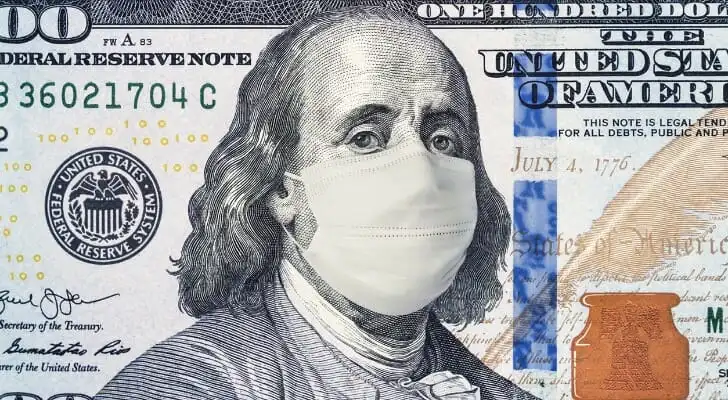One of the main provisions of the Coronavirus Aid, Relief, and Economic Security (CARES) Act was payment forbearance for all federal student loans, as well as 0% interest on those loans until Sept. 30, 2020. That meant no payments were due until that date and there would be no accrued interest until then. Despite these obvious benefits for student loan borrowers, there were a number of other stipulations in the CARES Act that aided these Americans, in addition to other pre-existing programs.
Student loan deferments were subsequently extended until Dec. 31, but they were extended Dec. 18 by Education Secretary Betsy DeVos to Jan. 31. The order allowed federal student loan borrowers to stop making payments, pause interest and it suspended debt collection.
Here’s a summary of how the CARES Act extended help to student borrowers in 2020.
Federal Student Loan Forbearance and Zero Interest
If you’re a federal student loan borrower, the CARES Act provides you with the forbearance of your federal loans until Sept. 30, 2020. More specifically, all monthly student loan payments are suspended from March 13 to September 30. This applies to borrowers who pay each month, have set up automatic payments or whose loans are in delinquency. The Department of Education has also ordered collection agencies to cease garnishing the wages, tax refunds and Social Security benefits of federal student loan borrowers in default.
In addition to forbearance, the CARES Act instituted a 0% interest period for all borrowers. That means your federal loan balances will not accrue any interest until Sept. 30, 2020. However, if you want to, the federal government will still allow you to make payments on your loans during this time, with the entirety of that money being applied to your loans’ principals. So if you can afford to continue making payments, doing so could save you lots of money down the road.
For example, let’s say you currently have $30,000 in federal student loan debt with a 5% interest rate. Over the course of the six months from March 13 to September 30, that debt would have normally accrued $750 in interest based on the above rate. In turn, this 0% interest and forbearance period will have saved you about $125 a month.
The DE will notify borrowers within the 15-day window after March 27 that their payments have been suspended and interest has been waived until September 30. Check with your loan servicer too, though, as they may take action as well.
Keep in mind that all of these rules don’t necessarily apply to private loans. Older Federal Family Educational Loans (FFELs), Perkins loans and ones issued by state agencies don’t qualify either. Check with your private or non-federal lender, as they may be rolling out their own relief programs.
Subsidized Loan & Pell Grant Eligibility for Students Who Drop Out
During normal times, students who drop out of college will have their time away deducted from the lifetime limits on their subsidized federal loan and Pell Grant eligibility. But as a result of the coronavirus crisis, the CARES Act allows students who drop out to retain their subsidized federal loan and Pell Grant eligibility. Beyond this, any grants or financial aid that these students receive will not need to be paid back.
Work-Study Payments to Coronavirus-Affected Students
Under specific circumstances, students who have federal work-study funds included within their financial aid award will be able to continue receiving payments if their school or related employer closed due to the coronavirus crisis.
There are three conditions that the institution must meet for this to happen, though:
- It must have closed following the beginning of the semester.
- It’s continuing to pay its faculty, staff and other employees.
- It’s meeting its institutional wage share requirement.
If the trio of stipulations above apply, then those work-study students will continue receiving their wages.
Tax-Free Student Loan Repayment Benefits

The CARES Act has a provision within it that allows employers to provide employees with up to $5,250 in tax-free student loan repayment benefits until the end of 2020. These programs have become a common offering with many employers, as they typically provide funds to help an employee either pay off their existing student loan debt or cover current tuition costs.
At first glance, this might appear to be an employer-centric perk. In actuality, though, employees will now not incur their part of the taxes typically enforced on these benefits for the rest of 2020. That’s because they are temporarily not seen as part of an employee’s wages.
Other Available Student Loan Relief Programs
Aside from the provisions within the CARES Act, there are many preexisting student loan relief programs available to Americans. These include options that offer in income-adjusted payments, qualifying loan forgiveness offers, loan grants and more.
Income-Driven Repayment Plans
Income-driven repayment (IDR) plans allow some federal student loan borrowers to cap their monthly payments at about 10% to 20% of their monthly income. And the remaining balance may be forgiven after 20 to 25 years of timely payments.
Federal student loan borrowers may qualify one of four options. Eligibility generally depends on your income and the types of loans you have. Monthly payments are typically based on your family size, adjusted gross income (AGI) and eligible loan balance.
You can also direct your loan servicer to place you on the one that you qualify for and results in the lowest monthly payment. But you can always explore your options to see which one fits you best. We briefly describe them below:
The Revised Pay As You Earn (REPAYE) Plan
- Eligible Loans: Direct Stafford Loans
- Payments: Typically 10% of your discretionary income, divided by 12
- Best For: Single borrowers with high earning potential
Pay As You Earn Plan
- Eligibility: Must be a new borrower as of Oct. 1, 2007 and received disbursement of a Direct Loan on or after Oct. 1, 2011.
- Eligible Loans: Direct Stafford Loans
- Payments: Generally 10% of your discretionary income, divided by 12
- Best For: Married borrowers with two sources of income but low earning potential
Income-Based Repayment (IBR) Plan
- Eligible loans: Direct Stafford Loans, FFEL Program Loans
- Monthly Payments: 15% (10% for new borrowers) of discretionary income divided by 12
- Best for: Those who don’t qualify for other income-driven repayment plans
Income-Contingent Repayment (ICR) Plan
- Eligible Loans: Direct Stafford Loans, Direct Consolidation Loans
- Payments: The lesser of your monthly payment on a fixed monthly payment plan throughout 12 years based on your income, or 20% of your discretionary income divided by 12
Note that you can’t place any Parent PLUS Loan in an income-driven repayment plan. However, you may consolidate Direct PLUS Loans or Federal PLUS Loans into a Direct Consolidation Loan and then place that consolidated loan on an ICR plan — but not any other income-driven repayment plan.
You can apply for an income-driven repayment plan and learn more about your options by visiting StudentAid.gov or by contacting your student loan servicer. Have your latest federal tax return or other proof of income ready before applying.
Public Service Loan Forgiveness Program

If you’re eligible for the Public Service Loan Forgiveness Program, you can wipe out your loans after making timely payments for 10 years while working in a qualifying government or public service field. Qualifying employers include those in teaching, nursing and firefighting.
Provisions in the CARES Act also suspend payments for federal loans through the PSLF program. This means it would allow borrowers to achieve forgiveness even if they stop making payments during the relief period, provided they meet all other qualifications. Contact your loan servicer to make sure that suspending payment under these new laws won’t affect your progress toward forgiveness.
Qualifying for the PSLF program isn’t easy. In fact, Department of Education data shows that as of June 2019, only about 9% of submitted applications had been processed. Moreover, less than 0.05% of eligible borrowers had their loans discharged. The main reasons people were denied entry into the program have been incomplete applications and failure to meet eligibility requirements. Here’s an overview of the latter:
- Make Sure You Have PSLF-Eligible Loans: Only loans in the Direct Federal Loan Program will qualify for the PSLF program. You can consolidate or combine other federal loans into a Direct Consolidated Loan to make that loan eligible for PSLF.
- Make Sure Your Employment Qualifies: You must work at least 30 hours a week for an eligible federal, state or local public service employer or 501(c)(3) non-profit organization.
- Fill Out an Employment Certification Form: Fill out every part of the form and get your employer’s signature. Because you’ll need to fill out this form annually, make sure the information reflects the previous year’s application. Finally, send your employment certification form to FedLoan.
NURSE Corps Loan Repayment Program
The Bureau of Healthcare Workforce under the The Health Resources & Services Administration can pay up to 85% in nursing education debt for registered nurses and advanced practice registered nurses if they spend two years working at Critical Shortage Facilities. The program can also help eligible nurse faculty that work in hospitals, clinics, and other facilities with nurse shortages.
The program covers 60% of outstanding nursing school debt throughout two years. Applicants may apply for a third year to get an additional 25% covered. These funds are not exempt from federal income tax. You can learn more about this program and the application process by visiting bhw.hrsa.gov.
Teacher Loan Forgiveness Program

If you’ve been a teacher working in a low-income elementary or secondary school for five consecutive years, you can have up to $17,500 in federal loans forgiven. Check the Teacher Cancellation Low Income (TCLI) Directory for your school’s eligibility.
You must also meet other requirements, including:
- Work full-time as a teacher
- Took out loans after Oct. 1, 1998
- Have direct loans
- Have a bachelor’s degree
- Received full state certification as a teacher
- Have licenses and certifications in good standing
Learn more about the Teacher Loan Forgiveness Program at StudentAid.gov.
Military Student Loan Repayment Programs
Military personnel have access to various programs that can help them eliminate the burden of student loans. Among them is the Army Student Loan Repayment program. The Army may pay up to $65,000 worth of eligible loans. Active duty applicants must meet certain requirements:
- Decline enrollment in the Montgomery GI Bill in writing, using DD Form 2366
- No prior military service
- High school diploma and a score of 50 or higher on the Armed Services Vocational Aptitude Battery (ASVAB)
- Enlist in one of the critical Military Occupational Specialties (MOS) required under the Loan Repayment Program
- Loans must be made, insured, or guaranteed prior to entry on active duty
- Have eligible loans
You can learn more about this and other programs at GoArmy.com.
Consolidate or Refinance Your Student Loans
If you have loans from several sources, your servicer or a lender may offer to pay them off in exchange for handing you a new loan with a single payment and interest rate. Consolidation may lower your monthly payments. But it can also mean you pay more interest in the long term.
This move best suits those who are consolidating federal loans. But you can bundle different types of loans in the same fashion through refinancing. The goal here is earning a lower combined interest rate on the new loan.
Tips for Managing Your Money During the Coronavirus Crisis
- With student loan payments and interest deferred until Sept. 30, now is a great time to create or update your financial plan for the future. For professional help with your plans, speak with a financial advisor in your area. Finding one is easier with SmartAsset’s free tool, as it matches you with suitable local financial advisors. Get started now.
- The CARES Act has created a number of relief programs for Americans, including stimulus checks, student debt relief, paid sick leave and rent and mortgage payment relief. Each of these are designed to help you financially during the coronavirus situation, which makes it a perfect time to take a look over your full financial picture. To get started on your financial plan, consider creating a budget with SmartAsset’s budget calculator.
Photo credit: ©iStock.com/Diy13, ©iStock.com/Ridofranz, ©iStock.com/SDI Productions, ©iStock.com/Moussa81
